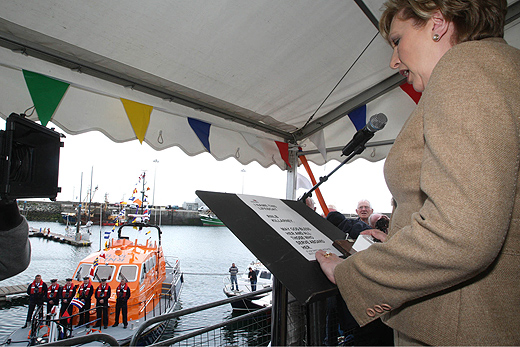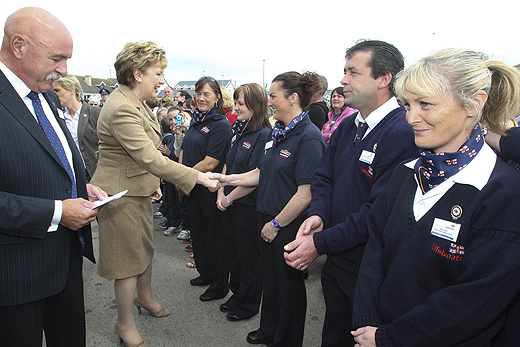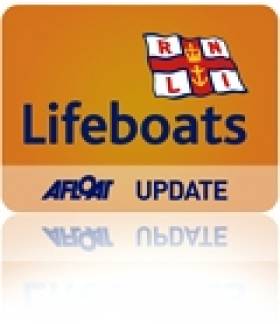Displaying items by tag: tamar lifeboat
President Mary McAleese names the first Tamar class RNLI lifeboat in Ireland at Kilmore Quay
The RNLI volunteers with Kilmore Quay lifeboat station are the first to receive the new €3 million lifeboat, which is the most modern and technically advanced lifeboat in the RNLI fleet. The new lifeboat, which is named Killarney (ON 1298) was funded by a legacy from Mrs Mary Weeks of Surrey in England who passed away in 2006.

Mrs Weeks met her husband while on a cruise off the west coast of Scotland on a boat named Killarney. Mrs Weeks had a strong RNLI connection through her maiden name Distin. She was a relation of the Coxswain of Salcombe lifeboat Samuel Distin and of lifeboat crewmember Albert Distin; both men lost their lives in the Salcombe lifeboat disaster of 1916.
Mrs. Weeks' niece Mrs Betty Hull, her great niece Mrs Anne Piggford and great nephew David Hull were special guests at the ceremony. Speaking during the ceremony the President of Ireland, Mary McAleese addressed the crowds with the lifeboat alongside, " Everything that is good about human nature is gathered on this day. All the good qualities, all the things that people are capable of doing out of goodness, generosity, love, kindness, care concern; all gather around the naming of this boat this day. It comes to us by way of gift, it has been blessed and the gift itself is a blessing.

A blessing not just to those that take the boat into their ownership this day but to the people someday who will need this blessing and need its gift. For almost two hundred years now the RNLI has stories to tell of saving literally ten of thousands of lives. Tens of thousands of people who could call on the lifeboat, call on the volunteer crews and in particular without knowing it call on the generosity of people who would never get on the boat. Who like Mary Weeks would never see the boat, never live to see it but would give it as an act of generosity to future people, complete strangers who she would never know."
The new Tamar class lifeboat is 16.3 metres in length with a maximum speed of 25 knots compared to the 14.3 metres of the current Tyne class lifeboat stationed at Kilmore Quay, which has a maximum speed of 18 knots. The lifeboat is self-righting and is fitted with an integrated electronics systems and information management system, which allows the lifeboat crew to monitor, operate and control many of the boats systems from shock mitigating seats.
The Tamar also carries a Y boat (an inflatable daughter boat) which is housed under the aft deck and deployed from a hinged door in the transom. The lifeboat has room for 44 survivors.






























































